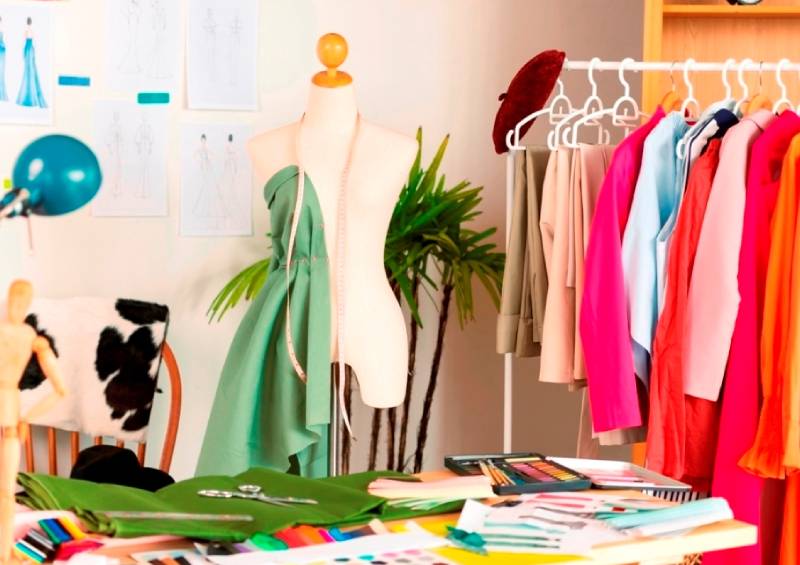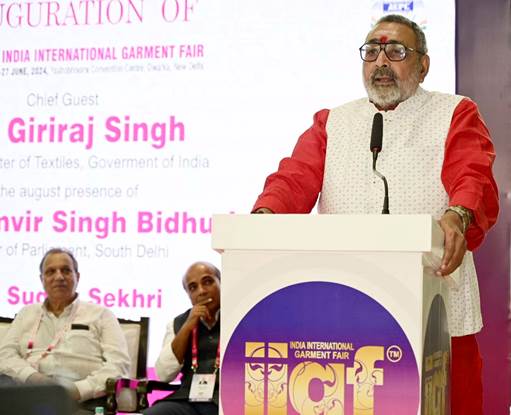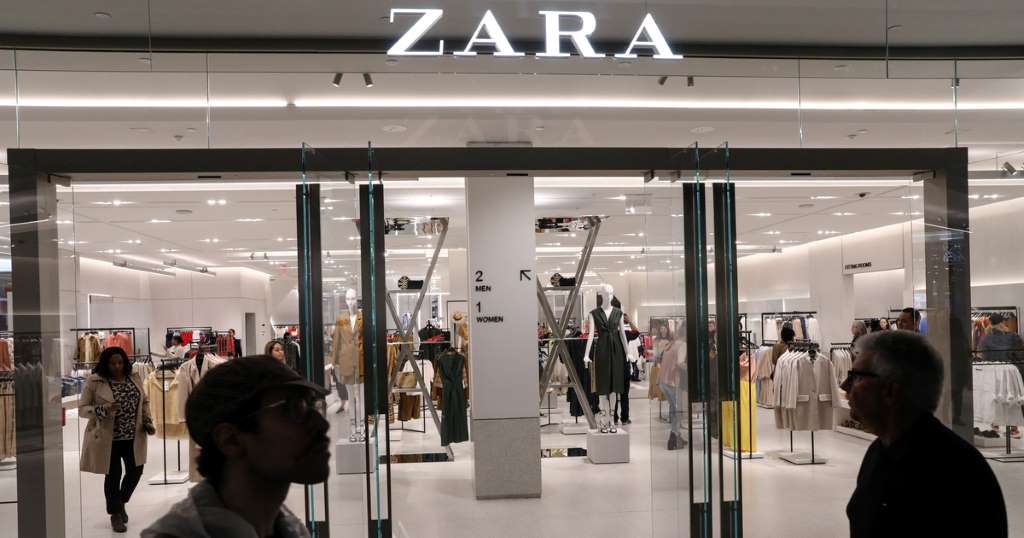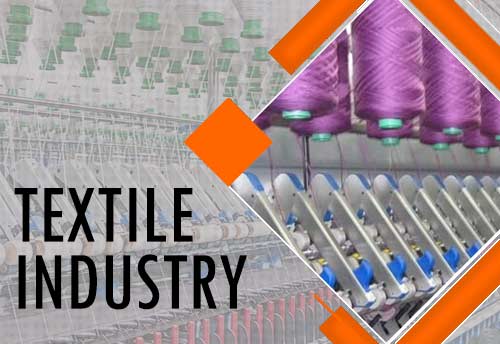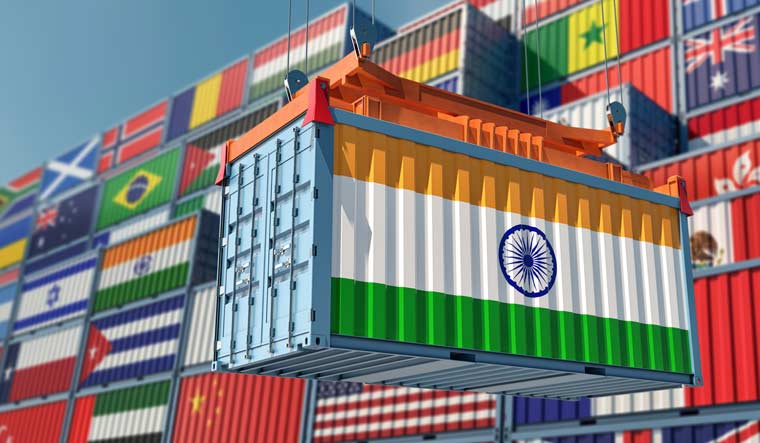FW
Europe's leading sustainable sourcing show, Source Fashion, is set to take place July 14th-16th at Olympia London. The event promises thought-provoking discussions on achieving sustainable practices within the fashion industry.
Each day focuses on a key theme: Day 1 explores collaboration and innovation, Day 2 dives into trends, legislation, and big-brand approaches, and Day 3 emphasizes education and certification.
Event Director Suzanne Ellingham highlighted the event's purpose, stating that Source Fashion aims to create a platform for addressing significant questions and fostering discussions about the future of fashion, sustainability, and better business practices. The agenda will bring together a diverse group of industry experts to discuss various challenges, including responsibility in fashion, legislation, certification, evolving trends, new materials and processes, transparency, and accountability.
Industry leaders will share their experiences and insights. Caryn Franklin MBE, a fashion activist, and Nick Beighton, former CEO of ASOS, will discuss the realities and challenges of implementing positive change.
Attendees can learn about tangible sustainability solutions from Jo Mourant, head of sustainability at Next Plc. A panel discussion will explore the potential of alternative materials to revolutionize sustainable fashion.
PepsiCo's design director, Hayley Shore, will share their commitment to reducing environmental impact and collaborating with sustainable designers, offering valuable lessons for both big brands and smaller businesses.
Fashion Futurist Geraldine Wharry will delve into the future of fashion infrastructure and supply chains. Sourcing expert Jack Stratten will discuss consumer trends and the role of AI in retail, providing inspiration for storytelling strategies.
The event will also address legal aspects with updates on environmental claims regulations from the Competition and Markets Authority (CMA). Additionally, attendees can learn about the Global Organic Textile Standard (GOTS) certification process.
Rounding out the program, a session on ethical sourcing essentials will equip attendees with the knowledge to navigate new regions and build a profitable sourcing strategy.
Source Fashion promises a platform for open dialogue on critical sustainability issues, fostering collaboration and progress within the fashion industry.
Fuelled by strategic investments and ambitious capacity expansion plans, GHCL Textiles plans to add 25,000 spindles with an investment of Rs. 215 crore by the second quarter of FY26, projecting a revenue increase of Rs 250 crore. This follows the successful installation of 40,000 spindles and 15 MW of renewable energy over the past two years. With revenue of Rs 1060 crores for FY24, GHCL Textiles aims to double its revenue within the next five years.
RSJalan, Non-Executive Director, GHCL Textiles, highlights the company's commitment to maintaining its status as a premium yarn manufacturer renowned for exceptional quality. The company continues to focus on catering to the specific needs of customers in the premium segment. The diverse product portfolio includes synthetic fiber, double yarn, open-end, and cotton yarn ranging from 24 to 120 counts, showcasing the company’s adaptability to dynamic market trends and reinforcing its competitive position.
Founded in 1927 as SreeMeenakshi Mills, the company began its modern journey with the acquisition of a distressed spinning unit in 2002. It has since transformed into one of India’s leading yarn manufacturers and exporters. In 2021, the GHCL Group demerged its Textile business into GHCL Textiles Limited and sold its Home Textiles Business to Indo Count. GHCL Textiles boasts state-of-the-art manufacturing infrastructure with advanced textile machinery. The company’s manufacturing capacity includes 2.25 lakh spindles, 3,320 rotors, 5,760 TFO drums, and 5 air jet spinning machines, with a total production capacity of 38,000 MTPA. Plans are underway to expand the product range and increase spinning capacity by 1.5 times.
The company is planning vertical integration of its textile manufacturing to include knitted and woven finished fabrics, which yield superior margins and integrate seamlessly with the existing business. GHCL Textiles has announced a total investment of Rs 1,045 crore, with Rs. 350 crores already invested in adding 40,000 spindles, Rs. 250 crore currently being invested to add 25,000 spindles, and another Rs. 500 crore planned for vertical integration in the coming years.
Pioneer Denim is set to make its debut at Premiere Vision this July. A vertically integrated denim fabric manufacturer from Bangladesh, Pioneer Denim boasts one of the largest spinning units in the country.
For this edition, the company plans to introduce its new Pineapple Fabric, continuing to offer Pioneer’s super-soft fabrics achieved through unique mechanical weaving techniques that use no enzymes. Looking ahead, it plans to develop new denims combining cotton with Merino wool and linen, says Christian Reca, Expert Denim Insider, Designer, and Chief -Marketing and Merchandising, Pioneer Denim
Pioneer will unveil its new Fall/Winter 2025/2026 Renaissance collection, developed using cutting-edge technologies and extensive research in collaboration with its partners.
Among the bio-based fibers and advanced recycling technologies Pioneer is launching is a unique denim made from cotton and pineapple fibers. These fibers, recycled mechanically from food crop waste, help reduce the carbon footprint by minimising water, pesticide, and insecticide use during cultivation.
The collection features a variety of exclusive denim shades and innovative fabric constructions. Notably, some fabrics have been developed in partnership with DyStar to maximize water savings and minimise the use of hydrosulfite and aniline.
The collection also includes materials such as organic and BCI cotton, T400 Ecomade, Lycra Adaptiv and Tencel.
Pioneer guarantees high-quality fabrics produced from premium cotton in its own yarn facilities. The company handles R&D, dyeing, weaving, finishing, and inspection in-house, utilising state-of-the-art machinery from the US, Germany, Italy, Switzerland, and Belgium.
According to the fourth edition of Kearney’s Circular Fashion Index (CFX), to achieve circularity, brands need to prioritisethree strategies. First, focus on materials that are biodegradable or mono-materials for easier reclamation at the product’s end of life. Second, design products with modularity in mind to simplify disassembly. Third, integrate recycled, upcycled, or downcycled materials into new designs, ensuring a clear path for second-life uses. Additionally, extending product life through repair and recovery services can foster consumer loyalty and market strength.
Operating within the traditional linear models, most fashion brands environmentally suboptimal choices from raw material selection to consumer education. Despite extensive discussion around circularity, actual redesign and implementation lag behind. Debates often focus on material choices, like cotton versus polyester, without consensus on their environmental impacts, overshadowing the need for comprehensive end-to-end assessments.
Current life cycle assessments are limited and often lead to debatable conclusions. Kearney PERLab's study found that cotton, while worse for land and water use, is better in terms of emissions compared to polyester. However, a holistic approach is needed to embed circular principles throughout a product’s life cycle, from sourcing to recycling.
Despite challenges, there are promising developments. The CFX 2024 expanded to include 235 brands across 18 countries and five categories, with refined price segmentation. The average CFX score improved to 3.20 out of 10, driven by better care instructions and increased emphasis on circularity in brand communications.
Top performers like Patagonia and Levi’s, and strong improvers like Coach, Uniqlo, and Zara, are leading the way. Coach’s Coachtopia focuses on minimising new materials and extending product life, while Uniqlo’sFurugi Project expands its pre-owned segment. Zara’s Pre-Owned platform offers repair, resale, and recycling services.
Footwear brands like Allbirds, Timberland, Brooks Running, Golden Goose, and Ugg show significant progress in circular initiatives. However, widespread adoption of circular practices is still limited. Regulatory changes in the EU and US are pushing brands to increase transparency and accountability, potentially accelerating circularity efforts.
Premier Turkish denim manufacturer, Calik Denim plans to launch it new Royal Denim collection at the upcoming Premiere Vision trade show in Paris from July 2-4, 2024. This new luxury denim capsule is designed for creating elegant yet stylish garments.
Inspired by tailored apparel, the Royal Denim collection features clean image indigo denims that resist fading better than traditional denim. The weft yarns in these fabrics ensure minimal shrinkage, ranging from zero to three percent, making them ideal for ‘cut-sew-wear’ clothing, suitable for both ready-to-wear and bespoke apparel such as distinctive suits, pants, and blazers.
The fabrics are primarily made from cotton, enhanced with up to 10 per cent of precious fibers like cashmere, silk, linen, and organic cotton, adding value and meeting the standards of smart apparel. Additionally, these fabrics include a small percentage of stretch fiber, ensuring that classic tension points like shoulders, elbows, and knees accommodate the wearer's movements for maximum comfort.
In May this year, China’s exports of polyester productsimproved marginally with all products increasing month-on-month. Year-on-year, non-fiber products such as bottle-grade PET still performed best, while filament continued to be the main drag.
According to customs data, the total export volume of polyester products by China in May increased by 174,000 tons Y-o-Y and 75,000 tons M-o-M showing significant improvement compared to the previous month.
From January to May, the total export volume of polyester increased by 359,000 tons Y-o-Y to 5.024 million tons. Due to the decline in filament exports, the year-on-year increment in polyester exports this year remains relatively low compared to the same period in previous years.
In May, filament exports increased month-on-month but continued to decline year-on-year. From January to May, filament exports decreased by 131,000 tons Y-o-Y
During the month, China’s export of polyester filament yarn to India decreased by 62,000 tons Y-o-Y while increasing by 4,000 tons M-o-M to 12,000 tons. China's polyester filament exports to other countries were 326,000 tons, a Y-o-Y increase of 36,000 tons and aM-o-M increase of 14,000 tons.
Among the main destination countries, the five countries with the most significant year-on-year increment in May were Pakistan and Vietnam, while from January to May, Vietnam and Russia showed the largest contributions.
Since the end of last year, bottle-grade PET exports have started to increase significantly and have maintained a good order-taking trend since then. In April and May, sea freight shipments slowed down due to container shortages, but the year-on-year increment for bottle-grade PET remained significant compared to other products.

The term ‘Global South’ encompasses a diverse array of developing countries, primarily in Africa, Asia, and Latin America. Traditionally viewed as reliant on raw material exports and basic manufacturing, the economic landscape of the Global South is undergoing a significant transformation.
A shifting landscape
The global south's contribution to global GDP is undeniable. According to the World Bank, in 2023, their share reached 38 per cent, with projections indicating it will surpass the global north by 2030. This trend is projected to continue, with some estimates suggesting that by 2030, three of the four largest economies will be from the global south – China and India leading the charge. This growth is attributed to various factors, including industrialization. Countries like China, India, and Vietnam have become manufacturing powerhouses, attracting foreign investment and generating significant export revenue. Moreover, a youthful population fuels a large workforce, contributing to economic activity.
Major players in the global south
Within the global south, several countries are emerging as major players in the fashion and textiles industry. Here are a few key examples:
China: A powerhouse in garment manufacturing, China is the world's largest exporter of textiles and apparel, accounting for over 30 per cent of the global market share. China's economic influence in the Global South cannot be understated. "China's Belt and Road Initiative (BRI) is a major driver of investment in infrastructure and manufacturing across the developing world," explains Yu Yongding, Senior Research Fellow at the Academy of Macroeconomic Research at Peking University. This initiative has resulted in infrastructure development in many developing countries, facilitating trade and economic growth.
Bangladesh: A rising star, Bangladesh has experienced rapid growth in its garment industry, capitalizing on competitive labor costs and a skilled workforce. In 2022, the garment sector contributed over 80 per cent of Bangladesh's total exports.
India: With a rich textile heritage and a growing domestic market, India is a major player in both apparel production and consumption. The Indian textile and apparel industry is expected to reach $300 billion by 2025.
Vietnam's rise in fashion
Vietnam exemplifies the growing importance of the global south in the fashion industry. As a result of trade agreements, investment in infrastructure and a focus on skill development, Vietnam has seen a dramatic rise in its garment exports. The 2023 McKinsey & Company ‘The State of Fashion 2023’ report highlights Vietnam's impressive growth: "Vietnam's apparel exports grew by 19 per cent in 2021, compared with a global average of 12 percent." This growth can be attributed to factors such as shifting trade dynamics. The ongoing trade war between the US and China has led some fashion brands to diversify their sourcing, creating opportunities for Vietnam. And favorable government policies implemented to promote foreign investment and export-oriented industries.
|
Country |
Share of global textile and apparel exports (approx.) |
|
China |
30% |
|
Bangladesh |
8% |
|
Vietnam |
5% |
|
India |
4% |
Challenges and opportunities
The global south's rise in the fashion industry presents both opportunities and challenges.
Challenges include labor concerns as ensuring fair wages and safe working conditions for garment workers remains a critical issue. Then there are issue around environmental impact as the fashion industry is a significant contributor to pollution. Sustainable practices need to be adopted.
In a positive way, embracing automation and digitalization can improve efficiency and productivity. Also moving beyond basic garment production to higher-value products can increase profit margins.
Indeed, the global south is no longer on the economic periphery. Its growing share in the global economy, particularly in the fashion/apparel/textiles sector, is undeniable. As these economies mature, they will undoubtedly play an even more significant role in shaping the future of the global fashion industry. However, navigating the challenges of fair labor practices, environmental sustainability, and economic diversification will be crucial for sustained success.

Denim, that iconic fabric synonymous with casual cool, continues to be a global fashion staple. But the trade winds that carry jeans around the world are shifting. While the global market for denim jeans is projected to reach a $95.2 billion by 2030 at CAGR of 5 per cent from $64.5 billion in 2022, the trade landscape is changing.
Global trade a balancing act
The global denim market is estimated to have reached $64.5 billion in 2022, and analysts project a healthy growth rate of 5 per cent to reach $95.2 billion by 2030. This growth is due to many factors like rising disposable incomes, particularly in developing economies, and a continued love for denim across demographics. However, the trade landscape is not without its challenges. Fluctuations in cotton prices, a key raw material, and rising concerns about sustainability can create ripples throughout the supply chain.
The past few years haven't been smooth sailing for denim trade. While recovering from the pandemic, the industry faces challenges like fluctuating cotton prices and inflation impacting consumer spending. Despite this, the online segment is expected to see a strong CAGR of 9.2 per cent due to the growing popularity of e-commerce.
Table: Global denim trade
|
Country |
Projected import/export growth (CAGR) |
|
Importers |
|
|
US |
5% |
|
Germany |
3.20% |
|
Japan |
6% |
|
Exporters |
|
|
Bangladesh |
12% |
|
Vietnam |
9% |
|
Egypt |
8% |
The US remains the denim import king, with a steady 5 per cent rise projected for the coming years. This can be attributed to their diverse consumer base and competitive global prices. Europe, particularly Germany (projected CAGR of 3.2 per cent), continues to be a major importer, valuing both functionality and style in their jeans. Their strategic partnerships with countries like Bangladesh and Egypt are expected to keep the German denim scene thriving Interestingly, Japan is projected to see a 6 per cent jump in imports. Their focus on high-quality, innovative jeans, often featuring sustainable features, is driving this growth. This trend is driven by a growing demand for high-performance jeans with unique washes and sustainable features, a niche that both Turkish and Japanese manufacturers are adept at filling.
Export powerhouses, weaving a global web
While the US and Europe remain denim consumption giants, Asia dominates the export scene. Bangladesh, the undisputed ‘denim king’ continues to reign supreme with a projected 12 per cent export growth pushed up by skilled labor, robust infrastructure, and favorable trade deals. Vietnam is making a powerful comeback, with a projected 9 per cent rise in exports thanks to government initiatives, automation investments, and a strategic shift towards high-end denim production. Egypt is a surprise contender, with a projected 8 per cent export jump driven by competitive pricing, a focus on sustainable practices, and partnerships with European labels.
A sustainable future for denim
While the traditional denim giants hold strong, there's a growing demand for sustainable practices. Consumers are increasingly looking for eco-friendly jeans, prompting manufacturers to explore recycled materials and water-saving production methods. This focus on sustainability could reshape the future of denim trade, potentially favoring countries that prioritize these practices. Countries like Egypt, with its focus on eco-conscious production, are well-positioned to capitalize on this shift.
The global denim trade is poised for continued growth, with a projected CAGR of 5 per cent. While traditional powerhouses like the US and Europe will remain key import destinations, Asia is expected to maintain its dominance in exports. Emerging players like Vietnam and Egypt are expected to challenge the established guard, driven by factors like automation, innovation, and a focus on sustainability. As consumer preferences evolve, the industry is likely to witness a shift towards eco-friendly production practices, ensuring a future where denim remains not just fashionable but also responsible.
Overtaking the United States, Brazil is poised to become the world's largest cotton exporter for the 2023/24 season. This shift follows an over 80 per cent increase in Brazilian cotton shipments this season, according to the local exporters' association Anea.
Brazil’s cotton exports are likely to rise further next season, as farmers harvest a potentially record-breaking crop, with further increases expected in 2025-26, opines Miguel Faus, Head, Anea.
He referred to data from the US Department of Agriculture (USDA), which recently raised its forecast for Brazil's cotton exports this year by 300,000 bales to 12.4 million bales, while reducing the US forecast by 500,000 bales to 11.8 million.
Verified by Reuters, a USDA report highlights, Brazil already surpassed the US in terms of cotton production in 2023/24, ranking third globally behind China and India and is expected to maintain its position in 2024/25.
Some of the largest buyers of Brazilian cotton include China, Vietnam, Bangladesh, Turkey, and Pakistan.
The newly introduced brand, Authentico by the Schneider Group promises a completely transparent, verified, traceable, ethical, and high-quality wool supply chain, from farm to garment.
Aspiring to be globally recognised, the brand allows the fashion industry and end-consumers to choose fully traceable premium quality wool. The brand operates within the Schneider Group's globally certified network and adheres to a meticulously structured approach that verifies, traces, and brands every stage of the sourcing and manufacturing processes throughout the supply chain.
The Schneider Group has also developed the ‘Authentico Verification System,’ to provide criteria and guidelines for all supply chain partners. This system includes the ‘Authentico Integrity Scheme,’ which promotes best practices for wool growers at the farm level. Animal welfare is a core component of this scheme, emphasisingmulesing-free practices and adhering to the five domains of animal welfare. The scheme also covers land and pasture management as well as social responsibility. Wool is sourced from carefully selected and dedicated growers who subscribe to the “Authentico” platform. The selected fibers are processed in Schneider Group’s own certified mills across several continents.
The verification system also includes the ‘Authentico Brand Guidelines’ for other supply chain players, including spinners, weavers, knitters, garment makers, brands, and retailers. These guidelines set precise criteria to ensure alignment with ‘Authentico’ brand values.
Additionally, the Schneider Group has integrated the innovative traceability platform ‘TextileGenesis’ into its ‘Authentico Verification System’ to digitally track all wool transactions.
Laura Ros, CEO, Schneider Group, observes, through these initiatives the group aims to reinforce its customers’ confidence in the company’s sustainability and traceability initiatives not only on farms but also at the industrial level.

